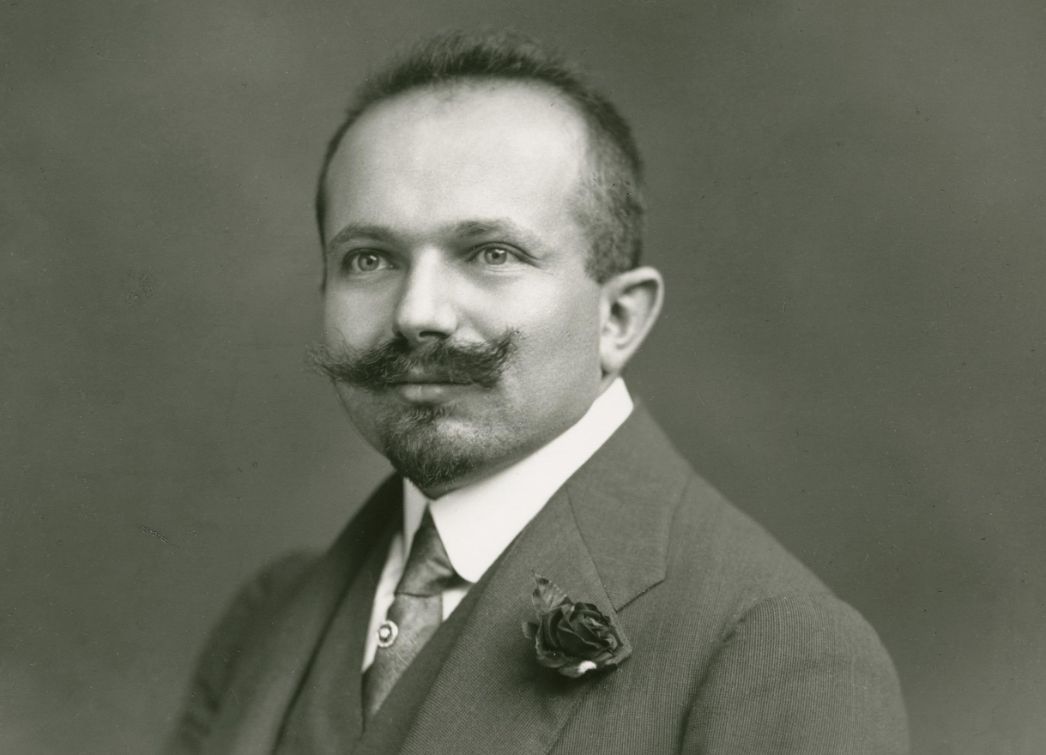Transcript
Narrator Since the turn of the century, Jindřich Waldes, co-founder of “Waldes & Co.” in Prague, had been a successful industrialist. His company specialized in producing fasteners for the clothing industry, developing a process for manufacturing snap buttons mechanically, which revolutionized their production. New factories had been established in Dresden, Paris, London, Barcelona and New York. Waldes called the snap button “Koh-i-noor” after the supposedly largest diamond in the world. Waldes, a passionate collector of art, had his company logo drawn by the Czech painter František Kupka. He also opened a museum of buttons and safety pins in Prague.
In the spring of 1939, German troops occupied Czechoslovakia and established the “Protectorate of Bohemia and Moravia”. The Nazis wasted no time seizing control of the industries and using them to prepare for the war. Jindřich Waldes was Jewish and recognized early the danger to him and his family. He enabled their emigration to New York already in 1938. But he himself stayed on in Prague to attend to his business.
Late in June 1939, the company “Waldes & Co.” came under the scrutiny of Nazi “Aryanization politics”. Probably, the patented snap button “Koh-i-noor” was seen as potentially very useful in the production of Wehrmacht uniforms. The Reich Ministry of Economics appointed a non-Jewish trustee as the director of “Waldes & Co.”, effectively taking away Jindřich Waldes’s control of his business.
On the day the war began, the Gestapo arrested Jindřich Waldes. He was among the 3000 members of the Czechoslovakian élite who were deported to concentration camps following a wave of arrests. At the end of September 1939, 700 of them were taken from Dachau to Buchenwald and registered as so-called “protectorate inmates.” Until 1942, some were given a privileged position and did not have to work in the camp.
Shortly after his arrest, Jindřich Waldes collapsed due to diabetic shock and was taken to the inmates’ infirmary. The camp administration allowed him to be represented by the non-Jewish lawyer Hans Stück. Stück became the contact person to Waldes’s relatives and was supposed to help assure Waldes’s release from the concentration camp and his emigration to the USA. For this service, the Nazis asked the family for one million US dollars.
In April of 1940, the SS, with the agreement of the Reich Ministry of Economics, transferred Jindřich Waldes to the psychiatric clinic in Jena as a “special privilege”. As reciprocation for this, he had to pay ever greater sums from his personal assets, disguised as “donations” to the Buchenwald concentration camp. A part of this was ostensibly to be used for medical instruments and a new operating room in the inmates’ infirmary.
At the end of January, 1941, a discussion took place at the Reich Ministry of Economics. It was decided that, for 250,000 US dollars or one million Reichsmarks, Jindřich Waldes could buy his freedom. He also had to give up all his property, his factories in Europe and all patent rights. It was not until this agreement was certified, in early July, 1941, that he was released and taken to Lisbon. In Portugal the transfer of funds took place and Jindřich Waldes was allowed to board a ship bound for America. His health at this point was very poor. Stopping in Cuba, he died just after arriving in Havana.


